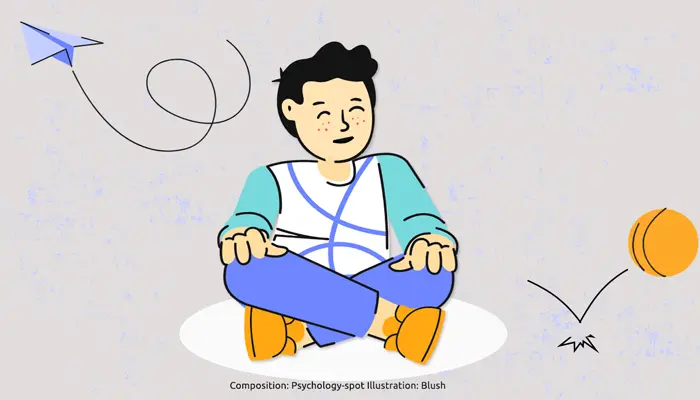
Sometimes the alleged immaturity and limitations of childhood can turn into the strong point of children. In fact, an increasing number of studies force us to rethink the infantile phase as the development of some cognitive functions causes the loss of other abilities. Such is the case with attention.
The more we develop the selective attention the much more we overlook the details
As we grow our cognitive functions get mature, as a result of the increasing complexity and differentiation of the brain structures. However, the development is not a straight line and can produce also a kind of evolutionary reversal, particularly in the field of attention.
Even if adults can prove to be better in most cognitive activities, sometimes the limitations resulting from the immaturity of brain connections that characterize the brain of children can be a point in their favor.
This is what has been discovered by some psychologists at Ohio University, who saw that adults are very good at selecting and retrieving information, but only to those who were asked to pay attention because they tend to ignore everything else. In practice, the adults focus on the trees and lose the sight of the forest. On the contrary, 4 and 5 year-olds children tend to pay attention to everything that is shown to them, whether it is important or not for the task.
The purpose of these psychologists was to compare the ability to process adult and child information through various attentive tasks. In the first study they worked with 35 adults and 34 children between 4 and 5 years old. The researchers presented to them an image with two opposing figures and later, another series of images in which they were to find the pattern that appeared in the first image.
As expected, adults were more able to identify the target model that they were asked to pay attention to. 94% of adults surveyed it accurately compared to 86% of children. However, the children were better off in recognizing the other model that in theory they had to ignore. 77% of children recognized it in some figures, compared with 63% of the adults.
What happened is that the children paid more attention to all the details of the images, regardless of the relevance of the different elements. Conversely, adults focused solely on finding the best solution to quickly solve the task.
This is not the first study that comes to this conclusion because in a very similar experiment that compared the visual memory of some five-year-old children to that of some college students, the psychologists found that 31% of children recognized correctly some models that were not asked to look to while among the students only 7% were able to do it.
Selective Attention vs Distributed attention
This natural mechanism would allow children to notice things that we are unable to see because of what we know as “selective attention”, which develops after the age of 7 when the maturation of the frontal lobes allows to implement a more effective selection of environmental information.
The selective attention is the ability to select and focus on a single stimulus among all those in the environment. This process can be considered as a “filter” that allows us to reduce the amount of incoming information, deciding what to process and what is relevant to the task we must accomplish, and ultimately what is irrelevant and must be ignored.
Children, with their innate curiosity and the tendency to explore everything around them, have a different mind-boggling mechanism, even when asked to focus on a very specific aspect of the environment. In some cases this mechanism can be very useful and beneficial. In fact, selective attention offers us advantages such as the ability to quickly and efficiently select information, but it also involves a number of disadvantages because it ignores many details.
Instead, the distributed attention of children helps to better understand the surrounding environment by simultaneously processing information from different sources. Obviously, the processing is slower and less efficient because it involves a huge amount of cognitive resources to capture and process each stimulus.
In short, the selectivity of the more mature systems of attention is an advantage in some cases and a disadvantage in others. In fact, when we walk, it is more convenient to activate the distributed attention as it will allow us to enjoy more the environment. That’s why children often point things along a walk, making us aware of details that adults had not seen, like a flower, a tree, a dog, a squirrel on the trail, or just a special shape.
Sources:
Hanania, R., & Smith, L. B. (2010) Selective attention and attention switching: Towards a unified developmental approach. Developmental Science; 13(4): 622-635.
Plebanek, D. J. & Sloutsky, V. M. (2017) Costs of selective attention: when children notice what adults miss. Psychological Science.
Sloutsky, V. M. & Fisher, A. V. (2004) When development and learning decrease memory. Evidence against category-based induction in children. Psychological Science; 15(8): 553-558.
Plude, D. J. et. Al. (1994) The development of selective attention: A life-span overview. Acta Psychologica; 86(2): 227-272.



